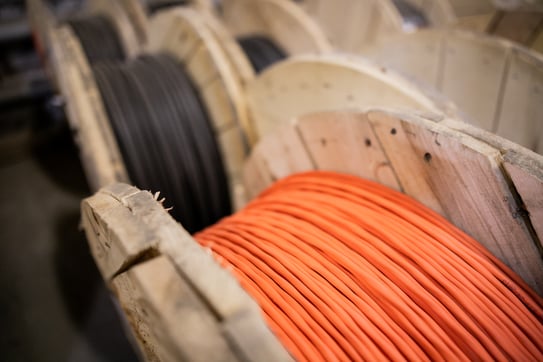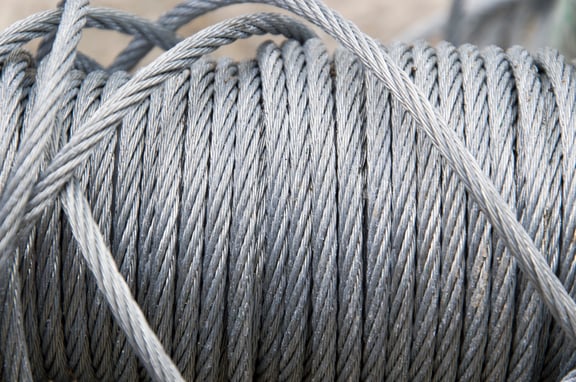Proper handling of subsea cables during installation is crucial to ensure their integrity and longevity. However, without knowledge of the correct handling procedures, it's easy to make mistakes that can lead to costly maintenance and repairs, causing significant downtime. We have a blog series dedicated to providing you with essential information on cable handling, especially during installation.
But in this article, we'll delve into the most common mistakes made by users when installing subsea cables and why it's crucial to avoid them at all costs. By following these guidelines, you can ensure a successful installation and the optimal performance of your cables.

Exceeding the Minimum Bend Radius
To keep cables in good condition, it's essential to treat them with care. To do this, it's best to follow the recommended minimum bend radii and avoid sudden, sharp bends. If you have to bend the cables, try to do it gradually. This will put less stress on the cables and help prevent damage. It's also important not to twist the cables too much. By avoiding excessive bending and twisting, you can prevent the cables from kinking or even breaking.
Using Incorrect Spooling Equipment
Incorrectly spooling armored cables is a common mistake that can easily be avoided by following a few simple steps. Firstly, it's important to use the right equipment and techniques to ensure that the installation is safe and efficient. This equipment should be able to handle the weight and size of the cable to prevent any damage.
There are various types of spooling equipment available, such as hydraulic and pneumatic spooling machines, cable coiling trailers, and tensioning equipment. It's crucial to choose the appropriate spooling equipment based on the weight and size of the cable being spooled to prevent any twisting or kinking and ensure that it can handle the load.
Loading the Spools Incorrectly
Another mistake to avoid when it comes to spooling is incorrect loading. Loading the spool properly is crucial to ensure that the cable is wound evenly and without any twists or kinks. Before loading the spool, it's important to inspect the cable for any defects or damage that could impact its performance.
When loading the cable onto the spool, it should be done without any tension or compression, and special attention should be paid to ensuring that it is evenly distributed on the spool. It's important to avoid any twisting or kinking of the cable during the loading process, as this could cause crushing or deformation of the cable.
After the spool is loaded, it should be tightly secured to prevent any movement during transportation.`

Improper Tension Control
Maintaining proper tension is crucial when handling cables as it should be maintained consistently throughout the winding, spooling, and installation process. To avoid costly mistakes, it's important to use tensioning systems to secure the tension and monitor the process closely. Any sudden changes in tension should be addressed immediately to prevent serious damage to the cables.
When winding cables, proper tension is critical to avoid mistakes that can cause damage or failure of the cable. Over-tensioning or under-tensioning can be harmful. To protect the cable and ensure it can withstand the extreme pressures and stresses of the subsea environment, the tensioning system plays an important role during winding.
Not Straightening The Cable
Before installing the cable, it's important to inspect it carefully for any kinks, twists, or other deformities. Any issues should be fixed before installation begins. While installing the cable, it should be straightened as it's fed from the shipping drum to the winch drum. This helps prevent twisting or looping of the cable during installation, which can cause damage. Furthermore, it's crucial to avoid any sharp bends or kinks in the cable during installation, as this can also cause damage.
Other Ways To Prevent Damage to Your Cables
We are dedicated to this topic and helping you avoid any costly mistakes that can damage your cables. We further delved into this topic in our blog on The Importance of Proper Handling to Prevent Damage to Subsea Cables, which covers essential aspects such as proper care during storage, handling, and transportation to prevent damage to the cables.
In Part 2 of this series, discover what strategies to implement during the installation process to further prevent damage and ensure the longevity of your subsea cables.
Although cables may seem like a small component of your work, they are critical to the success of your project. Proper maintenance can save you significant repair and replacement costs, as well as minimise downtime. If you are unsure whether your cables have been damaged, we recommend contacting a De Regt consultant who specialises in field service and can ensure your cables are functioning optimally.


